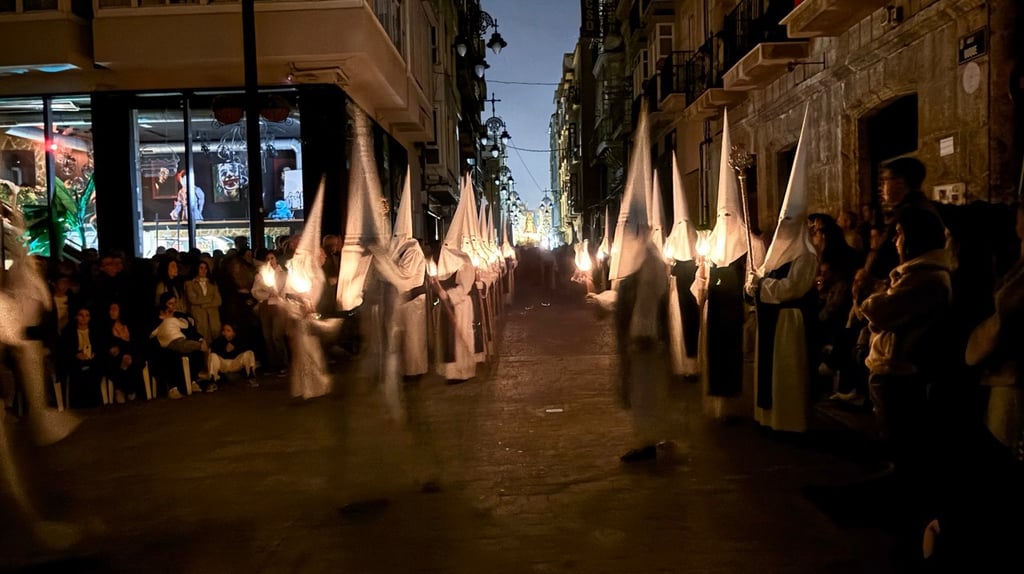Night of Silence and Light. Semana Santa in Cartagena.
Have you ever witnessed a tradition that left you speechless?
LIFESTYLE
Michal Wykowski
4/18/20252 min read


Something I notice more and more while living in Spain — and which is completely different from northern European countries — is the way important celebrations are commemorated. Here, both religious and historical events take the form of colourful parades, travelling through cities in loud and spectacular processions.
Some time ago I asked a good friend who lives in Cartagena:
“Where in this part of Spain is Semana Santa — Holy Week — best celebrated?”
Without a moment’s hesitation he replied:
“In Cartagena. Especially on Holy Thursday. These processions attract thousands of spectators — both locals and tourists.”
Last night I realised he was right. Exactly at 9:00 pm, in total darkness and almost absolute silence, the procession began through the historic city centre. Streets normally alive with lights and noise fell silent. The only source of glow was the candles carried by hundreds of participants. The atmosphere was mystical — a slowed‑down rhythm, the echo of footsteps on cobbled streets.
At times, the silence was broken by singing from the balconies — saetas, traditional flamenco songs sung unaccompanied, often full of raw emotion.
The tradition of Easter processions in Spain dates back to the 16th century, the time of the Counter‑Reformation. It was then that the first penitential brotherhoods (cofradías) emerged, which still organise the Passion mysteries today. Cartagena has its own long and rich history — the first documented processions took place here as early as 1600.
A particular attraction are the nazarenos — penitents in tunics and distinctive, pointed hoods called capirote. Although their appearance may evoke associations with other, less admirable organisations, these garments have medieval religious origins. The capirote in this form was developed to perfection mainly in Andalusia and regions such as Murcia and Castile, and nowhere else did it achieve such scale.
Cartagena is one of Spain’s oldest cities and the centre of Semana Santa celebrations, listed as a Spanish Cultural Heritage event. The processions here are famous for their extraordinary precision, order and military character — a legacy of the naval fleet and navy base.
Cartagena’s uniqueness is also highlighted by the sight of rows of chairs along the route — entire families meet ahead of the ceremony over tapas, conversation and a glass of wine, only to then immerse themselves in the overwhelming silence and contemplation. Here, religion and daily life merge in a way that is difficult to describe — from flamenco to fiestas, to ordinary chats on the street.
